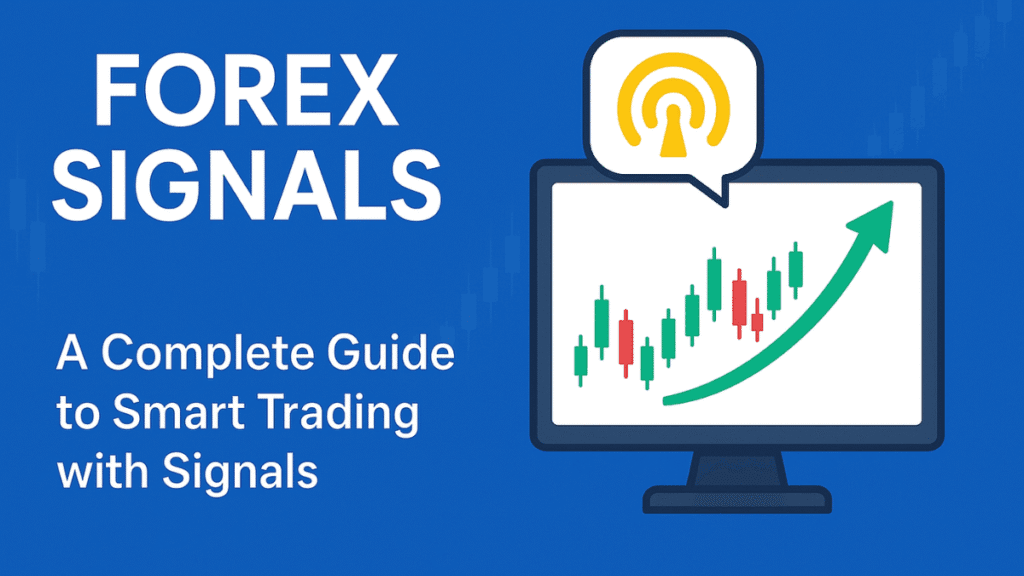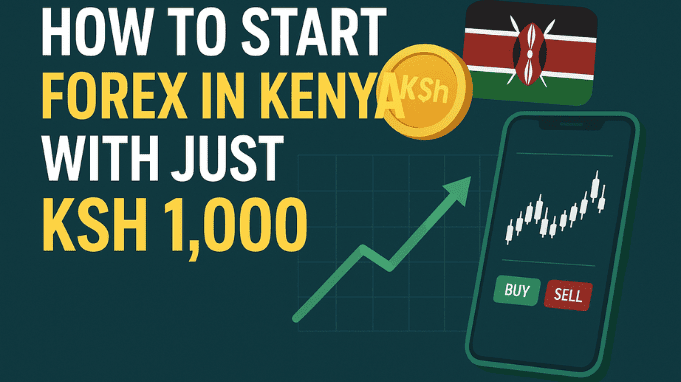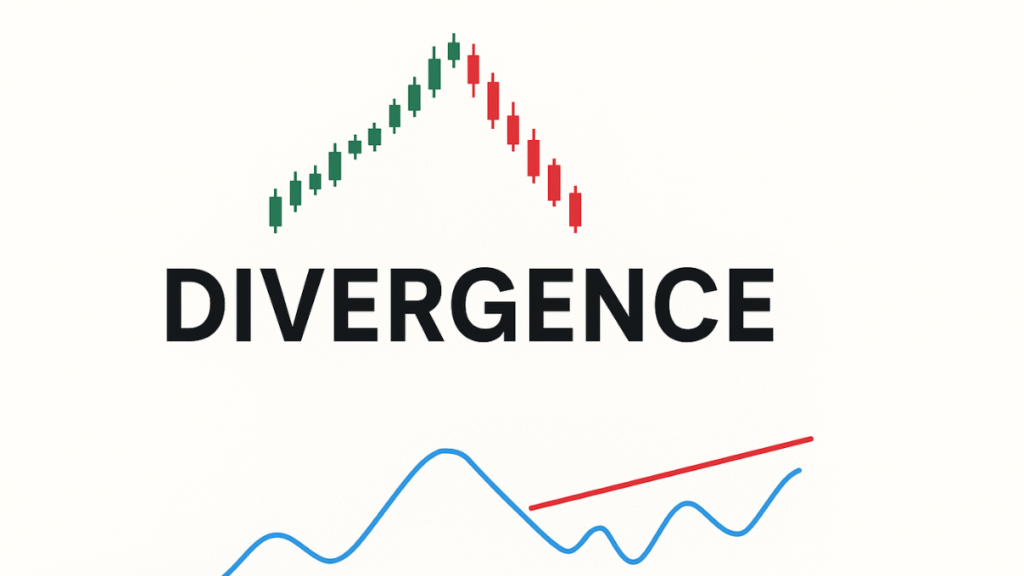If you want to succeed in forex trading, you need more than luck. You need strategy, knowledge, discipline—and good, timely information. That’s where forex signals come in. If used well, signals can help you avoid poor trades, sharpen timing, and gradually improve your edge.
You may already be familiar with communities like the Eazysignals Telegram Channel, where daily trading signals and market commentary are shared (I’ve used their signals before, and they are decent). But just subscribing isn’t enough. The signal must be part of a broader plan.
In this guide, I’ll walk you through:
- What forex signals really are
- Why they matter (and when they don’t)
- The different types of signals
- How signals are generated and delivered
- Risks and pitfalls
- How to pick a good signal provider
- Tips for using signals wisely
- The role of AI, robots, and advanced strategies
- Case studies, examples, and latest trends
- FAQs and concluding thoughts
Let’s dive in.
What Are Forex Signals?
At its simplest, a forex signal is a trade suggestion: “Buy or sell this currency pair, at this price, with this stop-loss and target.” It provides you with actionable data, rather than leaving you to guess when to enter or exit.
A typical signal includes:
- The currency pair (e.g., EUR/USD, GBP/JPY)
- The entry price (price at which to open the trade)
- The stop-loss (a level to exit if the trade goes wrong)
- The take-profit (a level to lock in gains)
- Occasionally, a timeframe or expiry window
- Sometimes, extra guidance or reasoning (support levels, trends, fundamentals)
Signals can originate from human analysts, automated systems, or hybrid setups that combine both. Good signals are clear, precise, and include risk parameters.
In effect, forex signals are like a roadmap for trading: they tell you where to go (entry), where to retreat if things go wrong (stop-loss), and where to aim (take-profit). But they are guides, not guarantees.
Why Forex Signals Matter (and When They Don’t)
Forex trading is a fast-paced, complex, and high-risk endeavor. Even seasoned traders can make mistakes in timing or risk control. Signals serve several purposes when used well:
Benefits of Forex Signals
- Save time & effort
Instead of staring at charts for hours, you get trade ideas delivered to you. - Improve decision-making
Many signal providers use robust technical or fundamental analysis to support their suggestions. - Better risk control
Because the best signals include stop-loss and take-profit, you avoid entering trades blindly. - Learning tool
By comparing signals and results, you can reverse-engineer the reasoning and refine your own trading approach. - Support for beginners
If you’re new, signals help you see how professionals structure trades. - Psychological support
Having a “second opinion” can reduce hesitation or emotional mistakes.
However — and this is important — forex signals are no silver bullet. They come with limitations and risks, and you should treat them as one tool in your trading belt, not the entire strategy.
When Signals Can Fail or Let You Down
- Market volatility and news shocks
A sudden economic announcement or geopolitical event can invalidate any planned trade invalid. - Over-reliance
If you blindly follow signal after signal without understanding or adapting, your growth as a trader stalls. - Scams and low-quality providers
Many signal services promise “guaranteed profit” or exaggerated win rates. Be very cautious. - Slippage and execution delays
The moment a signal comes, the price may have changed, forcing you into a less ideal entry or exit. - Cherry-picking and hidden performance
Some providers only display their best trades, hiding losses. This gives a skewed impression. (In fact, in recent research, “cherry-picking” bias is a known risk when evaluating signal strategies.)
The key is to use signals intelligently, verify and cross-check your assumptions, and always preserve capital.
Types of Forex Signals (and How They Differ)
Understanding the types of signals helps you pick the right one for your style.
1. Free Forex Signals
Many signal providers (or brokers) offer free signals as part of their promotions. These often give a taste of their service, but may come with limitations:
- Lower reliability
- Fewer signals
- Delayed delivery
- Less explanation or support
Free signals can be helpful as a testing ground, but don’t expect premium performance.
2. Paid / Premium Forex Signals
These are subscription-based services, where you pay on a daily, weekly, or monthly basis. The advantages include:
- Higher quality (in theory)
- More frequent alerts
- Better support, tutorials, and sometimes chatrooms
- Transparency (e.g., performance statements)
But even paid services are not foolproof — always test them first.
3. Manual / Human-Generated Signals
These come from experienced traders and analysts. Pros:
- Contextual judgment (market sentiment, news)
- Flexibility to adapt
- Explanations (why the trade is suggested)
Cons:
- Slower (humans can’t match algorithmic speed)
- Possible bias or inconsistency
4. Automated / Algorithmic Signals
These use bots, Expert Advisors (EAs), or algorithms to detect patterns and issue signals.
Pros:
- Fast
- Consistent (no emotions)
- Operate 24/5
Cons:
- No discretion
- Vulnerable to market regime changes
- Overfitting risk
Interestingly, recent research on deep learning models (LSTM, attention-based systems) is pushing algorithmic signal generation further, blending technical indicators and neural nets for predictions.
5. Copy-Trading / Mirror Signals
Here, instead of just getting alerts, your account automatically mirrors trades of established traders. Every time they trade, your account trades likewise.
Pros:
- Hands-off
- You can piggyback on expert traders
Cons:
- You inherit their risks
- You may not see the logic or reasoning
- Some providers take large fees/spreads
In many modern platforms, copy trading is integrated natively. It sits at the intersection between signals and automation.
How Forex Signals Are Generated and Delivered
Let’s look at the pipeline:
- Signal Generation / Strategy
- For manual: analysis of charts, patterns, support/resistance, news, volume
- For automated algorithms analyzing price, indicators, and historical data
- Hybrid: algorithms filter candidates, humans validate them
- Risk Sizing and Filter
Before sending out, the signal provider often runs risk filters to ensure the trade aligns with risk parameters (e.g., maximum drawdown, volatility checks). - Packaging the Signal
The alert includes a pair, entry, stop-loss, take-profit, time validity, and sometimes a supporting rationale. - Delivery
- Telegram, WhatsApp, Signal
- Push notifications / mobile apps
- Direct integration with MT4/MT5 (Signal copier or Expert Advisor)
- Web dashboard
- User Execution
The trader can place the trade manually, or, in more advanced setups, allow auto-execution through bridged APIs or EAs.
Some services offer an “auto-trade” mode, where signals are executed automatically in your account (provided you grant the necessary permissions). This is essentially a copy-trading / trade-copying bridge.
How to Evaluate and Choose a Forex Signal Provider
You don’t want to pick blindly. Here’s a checklist:
1. Transparency and Verifiable Track Record
- Look for a provider that publishes complete performance reports (wins, losses, drawdowns)
- Avoid vague claims like “100% accuracy”
- Prefer those that allow independent verification (Myfxbook, FXBlue, third-party audits)
2. Win Rate vs. Risk-Reward Profile
A 70% win rate with poor risk-reward (e.g., 1:0.5) is less desirable than a 50% win rate with 1:2 average reward. Consider both frequency and expectancy.
3. Risk Management and Position Sizing
Good signals include sensible stop-loss and take-profit levels consistent with market volatility.
4. Delivery speed and latency
Signals delayed by seconds may lose edge. Real-time delivery is essential.
5. Support, Community, and Education
A provider that also gives analysis, Q&A, training resources, or chat communities adds value.
6. Free Trial or Demo Option
Test their signals on a demo before risking real capital.
7. Reputation and Reviews
User feedback, verified testimonials, forums, social proof—do your homework.
8. Number of Signals / Frequency
Too many signals per day can lead to overtrading. Too few might not justify the subscription cost. Decide your comfort level.
9. Cost / Value
Compare what you get vs what you pay. Some providers offer multiple tiers (basic, premium) with added features.
10. Flexibility & Customization
If you can filter by pair types, timeframes, max drawdown, or adjust trade size, that’s a plus.
Let me emphasize: no signal provider is perfect, so start small, monitor closely, and always apply risk control.
Best Practices for Using Forex Signals — Use Them Smarter
To extract maximum value from signals:
- Don’t follow blindly
Use signals as suggestions. Always cross-check with your own findings (trend direction, fundamental context, market conditions). - Risk is small per trade.
Never risk more than 1–2% of your capital on any single signal, unless you have very high conviction. - Use proper risk-reward
Aim for at least 1:1.5 or 1:2 reward relative to your stop-loss. - Avoid overtrading
Don’t take every signal. Be selective. - Plan your day and signal “slots”
Focus on 2–4 good signals rather than chasing 20 small ones. - Use demo accounts first.
Validate the provider’s real performance in the market. - Adapt and journal
Keep a trading journal: signal, your entry, exit, what you did differently, and outcome. You’ll learn what signals suit you. - Periodically review provider performance.
Some providers degrade over time. Re-evaluate every month or quarter. - Use multiple sources
Don’t put all eggs in one basket. Cross-check signals from different quality providers. - Avoid signal fatigue
If a signal hasn’t worked for a while, pause and reset rather than forcing trades.
Comparing Signals vs Trading Robots vs Pure Manual Trading
| Attribute | Forex Signals | Trading Robots / EAs | Pure Manual Trading |
| Human judgment & context | ✔ (some) | ✘ | ✔ |
| Speed & consistency | Moderate | High | Variable |
| Emotion-free | Depends on the user | ✔ | ❌ |
| Ease for beginners | Moderate | Easier (if set up) | Hardest |
| Flexibility | Medium | Low (depends on EA) | High |
| Risk of system failure | Lower | Higher (bug, misfit) | Lower |
- Signals give recommendations but leave execution to you — you retain control.
- Robots / EAs can fully automate execution, but they often fail in novel market conditions.
- Manual trading offers complete discretion and learning opportunities, but requires more time and is prone to errors if you lack experience.
Many traders adopt a hybrid approach, using signals, their discretion, and occasionally testing or deploying robots in controlled settings.
Recent Trends and Advances in Signal Systems
The world of forex signals is evolving rapidly:
AI, Deep Learning & Reinforcement Learning
Emerging signal systems now incorporate advanced models:
- Deep neural networks (LSTM, attention models) that analyze price, indicators, sentiment, and volatility to forecast movements.
- Reinforcement learning agents that adapt to changing market regimes and optimize reward/risk through trial and error. For example, algorithms that improved the Sharpe ratio and reduced risk in forex settings.
These methods are not foolproof, but they show potential to enhance signal generation, making them more adaptive and robust.
Signal Marketplaces and Peer Review
Platforms like MQL5 enable signal providers to publish their performance, allowing traders to subscribe with transparency to the data.
This gives a more open marketplace where users can compare multiple strategies side by side.
Hybrid Systems and Analyst Oversight
Rather than full automation, many providers now use bots to scan and shortlist trades, then have human analysts vet and pick the best ones. This combines speed with discretion.
More Asset Classes and Diversification
Beyond currency pairs, many signal services now offer alerts for commodities, indices, stocks, and even cryptocurrencies. FX Leaders, for instance, provides signals in Forex, commodities, indices, and crypto.
Diversifying across instruments helps reduce dependency on Forex volatility alone.
Better Interfaces and Signal Tools
Signal delivery is improving:
- Real-time dashboards
- Signal filtering
- Notification controls
- Copy-trade bridges
- Mobile apps with instant alerts
The user experience is becoming as important as the signals themselves.
Examples and Case Study
Let me walk you through a hypothetical example, and then a real-world-inspired case.
Example: EUR/USD Signal
Signal provider issues:
- Buy EUR/USD @ 1.0850
- Stop-Loss: 1.0820
- Take-Profit: 1.0920
- Validity: 4 hours
You receive it after it’s published. You check charts:
- You see a support zone just below 1.0820 (so stop is not crazy)
- You check upcoming economic data (no surprise major event)
- You see, the trend over the past 8 hours is mildly bullish
You take the trade with 1% risk. The trade moves in your favor, reaches 1.0900, then retreats to 1.0920, and the signal hits take-profit. You gain ~70 pips (~0.7%) minus spread/commission. Good signal execution.
But what if:
- A sudden German inflation print surprises (EUR reacts), and the price immediately drops to 1.0820: your stop is triggered — you take the loss.
- Or the provider delayed sending this signal, and by the time you place it, the price is @1.0870, reducing the profit potential.
The outcome depends on execution, latency, and risk controls.
Case Study: A Beginner’s Journey
Meet “Anna,” a novice trader. She joined a paid forex signal group (via Telegram) offering 3–5 signals per day. She did the following:
- Demo testing
For 2 months, she used signals on a demo account. Some signals produced losses, but her overall performance was between +5 % and +7 %. - Switch to small live capital.
She funded $300 and only risked 1% per trade. Over the next 3 months:- She made 45 trades
- Win rate: ~55%
- Avg reward: risk ≈ 1.5
- Net growth: ~18%
- Drawdowns were limited due to disciplined stops
- Learning phase
She annotated each signal: what she liked, what she disagreed with, what the trend looked like, and how she would do differently next time. - Gradual independence
After 6 months, Anna started creating her own signals using results she trusted, and used the service only as a filter or confirmation.
Her story demonstrates that signals can accelerate learning and reduce early chaos—but the ultimate goal should be to build independence.
Common Mistakes When Using Forex Signals (and How to Avoid Them)
- Using too much leverage
Signals are not an excuse to go all-in. Stick to conservative leverage, especially when uncertain. - Blindly chasing signals
“I missed the signal, let me take another” — this leads to bad entries. Be disciplined. - Ignoring context or news
Even the best signals can be nullified by surprise events. Always check economic calendars. - Not adjusting stops or targets.
If price action changes, don’t be rigid. You can scale out, trail stops, or close early if conditions change. - Using too many providers
If you follow 10 services giving 20 signals/day, you’ll get overwhelmed. Stick to a few quality ones. - Mixing incompatible strategies
Don’t combine high-frequency scalping signals with long-term swing strategies without clarity. - Not re-evaluating performance
A provider’s performance tends to deteriorate over time. Regularly review metrics and be prepared to adjust accordingly.
Free vs. Paid Signals — Which Path Should You Take?
Free Signals
Pros:
- No cost
- Good introduction
- You can see how signals work
Cons:
- Less reliability
- Limited quantity and support
- Probably less transparent or delayed
Free signals are helpful for beginners, but as soon as you aim for consistency, you’ll likely need something more robust.
Paid Signals
Pros:
- Better quality in many cases
- More signals, better support, more features
- Often more transparent
Cons:
- Cost (which may eat into small accounts)
- Still risk of poor performance
- Sometimes, there are hidden fees or upsells
If you’re serious about trading, paying for a credible signal provider (after due diligence) is often justified.
Popular Signal Providers and Platforms in 2025
Here are some of the well-known, reputable Forex signal platforms/services in recent times (please research their current offerings before subscribing):
- FX Leaders — they offer real-time signals across forex, commodities, indices, and publish profit/loss reports.
- MQL5 Signals — a marketplace of signal providers where you can subscribe and link to your MT4/MT5.
- Learn2Trade — a service offering signals (free and paid) plus training and community support.
- 1000pip Builder — focuses on clear trade signals with defined stop-loss and take-profit zones.
- Exclusive Markets / Trading Central — acts partly as a signal and research provider.
Always test them, compare performance, and don’t assume past results guarantee future returns.
Advanced Tips and Signal Strategy Tactics
To go deeper:
- Signal filtering & confirmation
Use your own indicators (e.g., RSI, MACD, ATR, moving averages) to confirm a signal before execution. - Use multiple timeframes
If a signal is displayed on a 30-minute chart, check the trend on 1-hour and 4-hour charts for alignment. - Trailing stop / partial exit
Once in profit, move stops to break-even or take partial profits to reduce risk. - Avoid low-liquidity times
Don’t take signals just before major news or during illiquid hours (such as late Friday or just before a rollout). - Diversify across currency pairs/instruments.
Don’t just follow EUR/USD; mix in crosses or commodities to reduce dependence on a single trend. - Adapt to market regimes.
In ranging markets, trend-following signals fail. Use range strategies or the sideline. In trending markets, go full. A signal provider that adapts is more valuable. - Use signal overlays
If two providers generate the same signal around the same time, it can increase conviction. - Avoid “reset fatigue”
If multiple signals fail in a row, step back, reanalyze, and consider pausing the service temporarily.
Frequently Asked Questions About Forex Signals
A suggestion to trade a currency pair at a given entry, stop-loss, and take-profit level.
- Can beginners use signals?
Yes—signals can help beginners avoid early mistakes—but they should not substitute learning. - Are signals always correct?
No. Even high-performing providers have losing signals. The goal is positive expectancy, not perfection. - Is copying signals automatically safe?
Automated copying (mirror trading) is convenient but risky — you accept all the trader’s behavior (including errors). Make sure the provider is trustworthy. - How much capital is needed to start using signals?
You can start with small amounts, such as $100–$200, but a higher balance gives you more room to manage stops without being overwhelmed by noise. - How many signals per day is reasonable?
It depends on your risk tolerance and strategy, but 3–7 quality signals are better than 30 low-quality ones. - Can signals get you “rich fast”?
Not realistically. Good signals may accelerate your learning, but success ultimately comes with consistency, discipline, and effective risk management. - Are forex signals legal?
Yes, in most countries. But signal providers (if they act as advisors) may require licensing, so be cautious of unregulated claims. - What’s the difference between signals and robots?
Signals are recommendations (you execute). Robots/EAs are automated systems that execute trades without human intervention. - How do I know a provider is legit?
Transparent, verifiable performance, no wild guarantees, independent reviews, trial periods, and consistent support.
What Makes a Signal Provider Truly Good (Checklist)
Here’s a checklist you can use:
- Transparent performance record (showing all trades, not cherry-picked)
- Realistic, honest claims (no 100% accuracy)
- Risk controls built in (stop-loss, drawdown limits)
- Reasonable signal frequency (not a flood of alerts)
- Fast delivery (minimal delay)
- Support & training (explanations, community, mentoring)
- Option to test (demo or trial)
- Customization (filter by pair, timeframe)
- Diversification (multiple instruments offered)
- Responsive customer support
A provider that scores well on most of these is more likely to stand the test of time.
Conclusion
Forex signals are powerful tools when used wisely. They can reduce noise, sharpen your timing, and help you learn faster. However, they’re not magic — signals must be integrated into a disciplined trading plan grounded in risk control, sound reasoning, and ongoing evaluation.
Vincent Nyagaka is the founder of Chweya, where he breaks down complex financial topics into simple insights. A trader since 2015, he uses his market experience to help readers better understand investing, trading, and personal finance.




